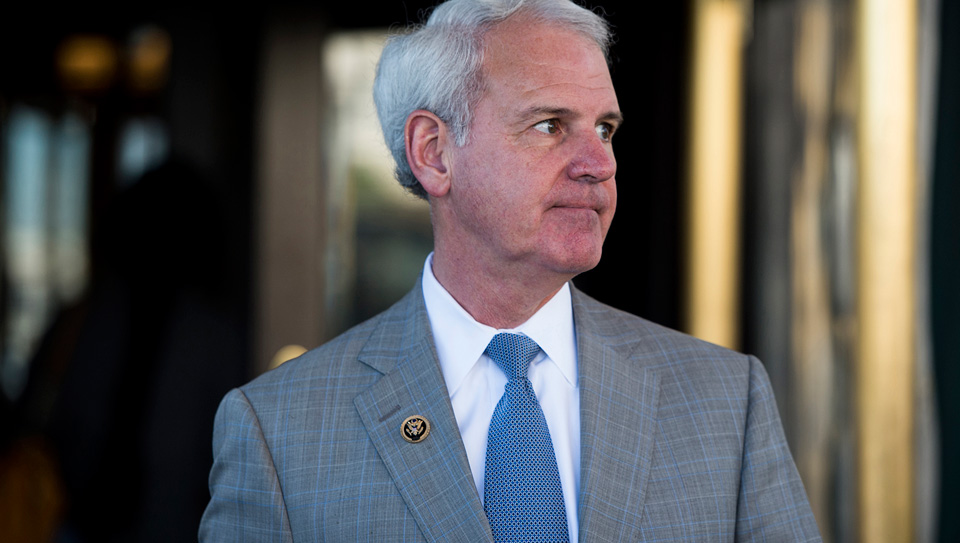
WASHINGTON – In their rush to dismantle the Fair Labor Standards Act (FLSA), the Trumpites in Congress are not bothering to refute, or even acknowledge, the damage they are doing to working people.
February 17, Andrew Stettner, an analyst for the Century Foundation, presented evidence to the House Workforce Protections Subcommittee that the minimum wage should be raised and that a rule passed by the Department of Labor (DOL) expanding worker eligibility for overtime pay should be kept in place.
Subcommittee Chairman Bradley Byrne, R.—Ala., did not even include Stettner’s testimony in a summary of the hearing.
Stettner had to defend the DOL overtime expansion measure, passed under the Obama Administration, because the Trump regime would not allow DOL staffers to do so.
Byrne opened the hearing by calling the FLSA outdated and pushing the GOP’s so-called Workplace Flexibility Act, code for legislation that would allow employers to arbitrarily decide when or when not to grant workers comp time or overtime pay.
“The rules and regulations implementing the Fair Labor Standards Act “are overly complex, burdensome, and outdated,” Byrne claimed. GOP witnesses, led by a so-called human resources consultant echoed his support for “workplace flexibility.”
Stettner, on the other hand, pointed out that “Under [the “flexibility” act] employers would have the right to refuse a request for time off if it “conflicts with business interests.”
Stettner also advocated raising the minimum wage and eliminating the tipped minimum wage. The federal minimum, $7.25 hourly, hasn’t been raised since 2009. The tipped minimum wage, hasn’t been hiked since 1991. Under this regulation, restaurant servers and others who traditionally receive tips, are guaranteed only $2.13 an hour.
“A national wage of $12 per hour, phased in by 2020, would provide raises averaging $2,300 per year for 35 million workers,” Stettner explained.
“This type of minimum wage increase, or proposals to phase in a $15 wage several years later, would account for the gains in worker productivity, restore the power of the minimum wage to reduce inequality and reinvigorate the economy at the lower-end of the wage scale.”
Two-thirds of minimum wage workers are over 25, Stettner noted. Plus, 35 percent of African-American workers and 38 percent of Hispanic-American workers earn the minimum.
Raising the minimum wage is one way to reduce income inequality, Stettner said. Keeping DOL’s new overtime pay rule is the other.
The rule would double the maximum salary at which a worker would be eligible for overtime pay. It’s now just over $22,000 yearly, and DOL’s rule – which GOP lawmakers have tangled up in federal courts—would double the maximum to more than $47,800.
The Trump White House has told DOL to reconsider the rule and some congressional Republicans want to dump it.
“The new level of $921 per week for overtime eligibility was conservatively set, so the bottom 40 percent of workers in the poorest parts of the nation would be guaranteed overtime pay,” Stettner said. “The increase would expand overtime rights for 4.2 million workers, and clarify them for an additional 8.9 million,” he said. “It is hard to imagine another policy that could have as much of an impact for middle wage workers, earning $10 to $23 per hour.”
He continued, “The overtime rule has the added benefit of simplifying compliance. The increase in the salary test tells employers clearly which modest and low-pay salaried workers are guaranteed overtime, and would substantially reduce the number of workers” whose duties, spelled out in DOL rules, would determine if they qualify for overtime pay.
When the Bush administration raised the overtime pay limit, it also expanded exemptions from overtime by revising definitions of who are “professionals” or “supervisors” who couldn’t get overtime pay. The expansions were so huge that even newspaper editorial assistants— so-called “copy boys”—were exempt from overtime pay.
Expanding overtime pay eligibility, and putting more people under overtime rules, would also let DOL use its limited resources to probe more real wage theft violations, Stettner said.
“The number of investigators declined by 14 percent from 1975 to 2004, even as the number of covered workplaces increased by 112 percent. The Department of Labor now has about 1,000 investigators to handle 7.3 million establishments. Targeted enforcement policies, focusing on industries where research has surfaced high levels of violations, is the only way” DOL can “recover significant amounts of unpaid wages and to move industry practices.
“For example, a directed investigation of a fast food restaurant was found to decrease violations at other fast food restaurants in the same zip code by 33 percent. With the probability of a department investigator engaging an individual employer so low, it is critical for the department to be able to use a wide range of tools—such as damages, court action, hot goods and civil penalties—to deter other employers from stealing workers’ pay.”












Comments